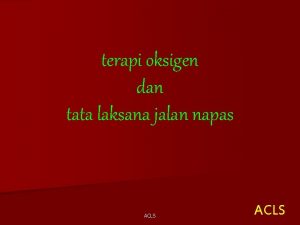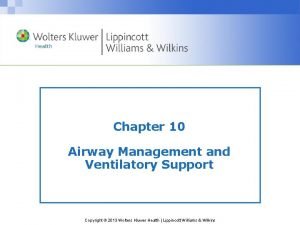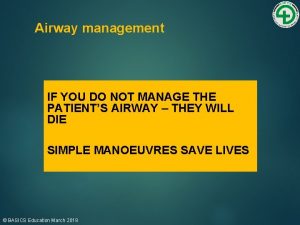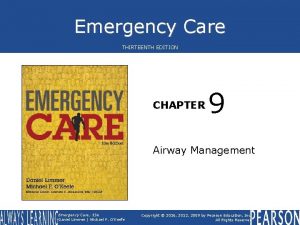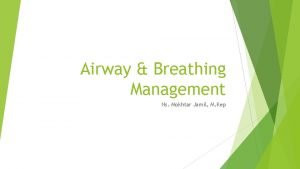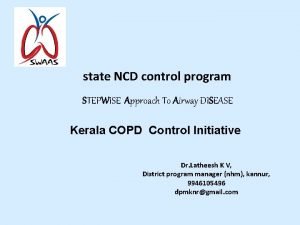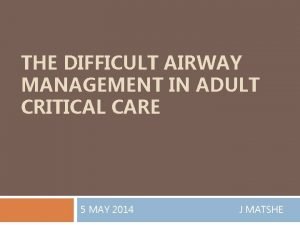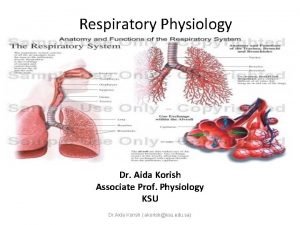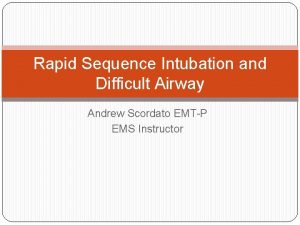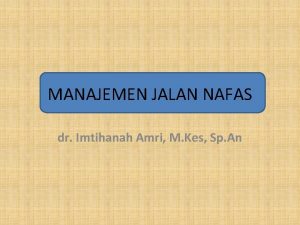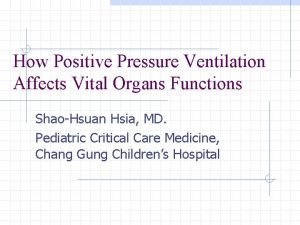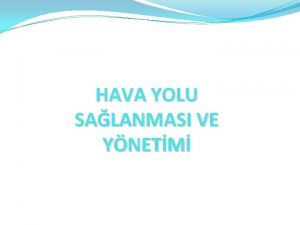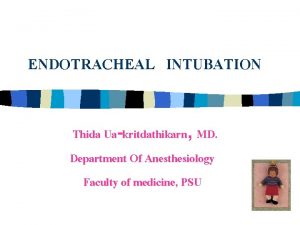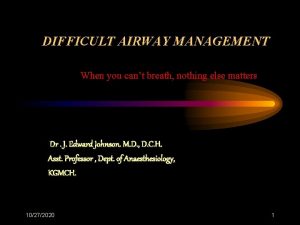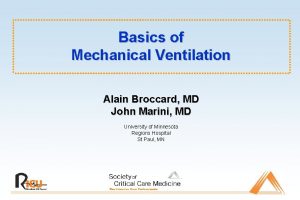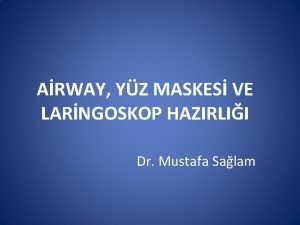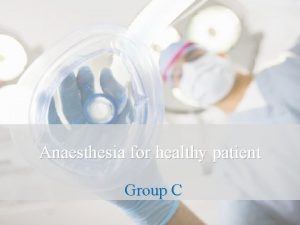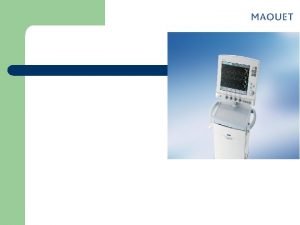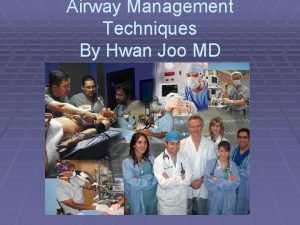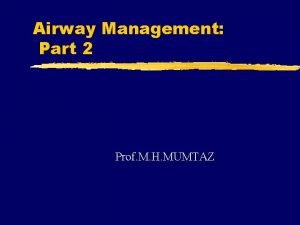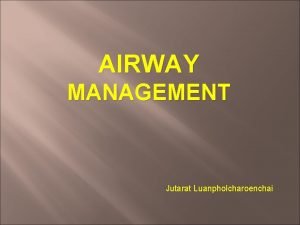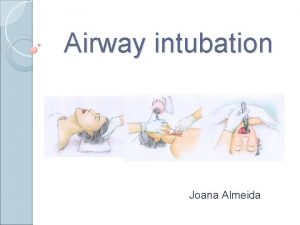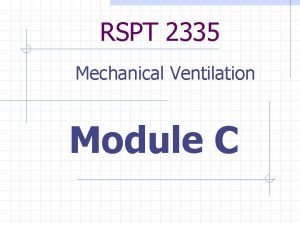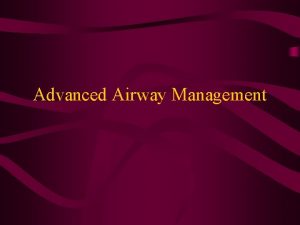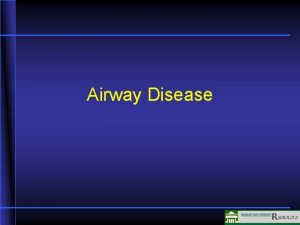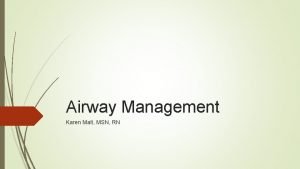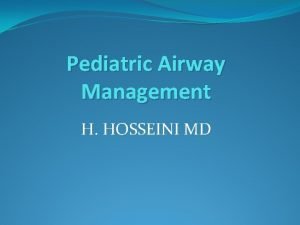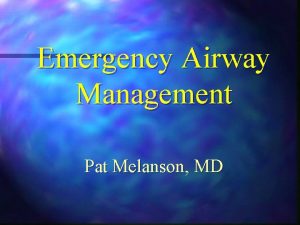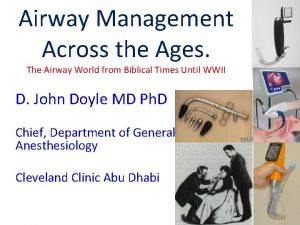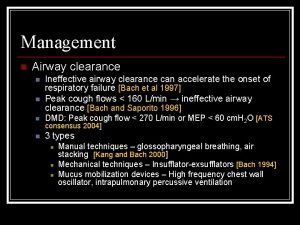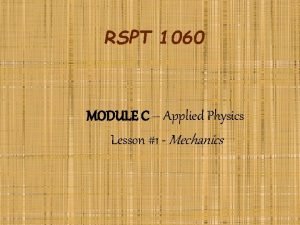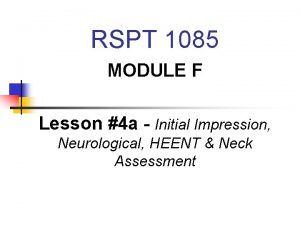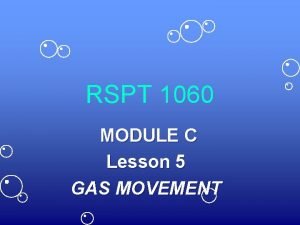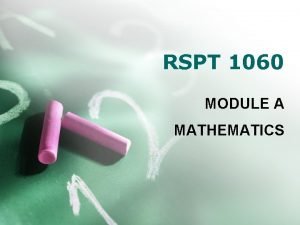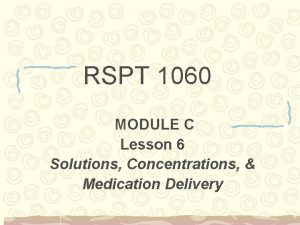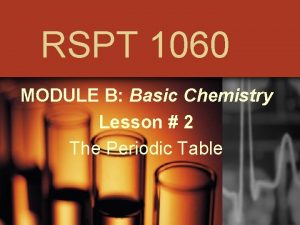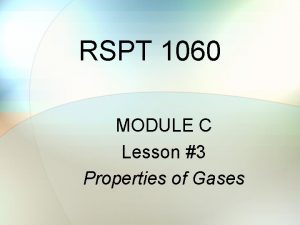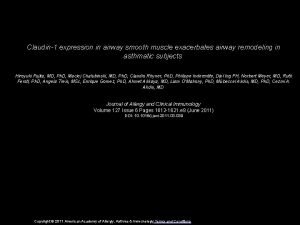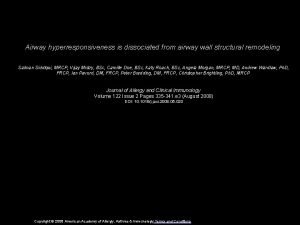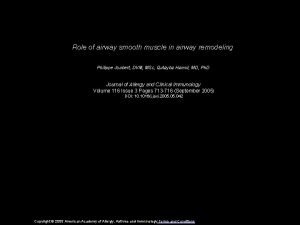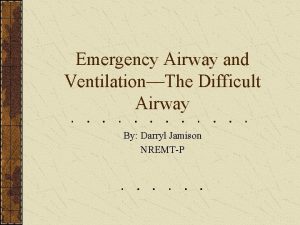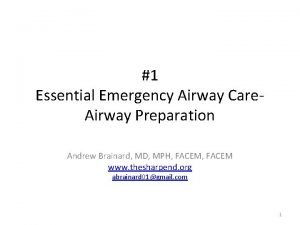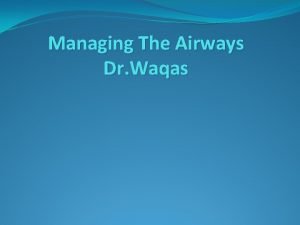RSPT 2335 MODULE A AIRWAY MANAGEMENT Part 4

































- Slides: 33

RSPT 2335 MODULE A AIRWAY MANAGEMENT Part 4 Advanced Airways

Parts of Module A AIRWAY MANAGEMENT Part 1 – Pharyngeal, Laryngeal & Esophageal Airways Part 2 – Tracheal Airways Part 3 – Airway Clearance Part 4 - Advanced Airways Part 5 - Airway Complications & Emergencies

OBJECTIVES • At the end of this module, the student should be able to… – describe the different types of endobronchial tubes (EBT). – explain when an EBT may be indicated. – given a patient scenario, determine the proper size EBT. – explain how to determine that the EBT is positioned properly.

OBJECTIVES • At the end of this module, the student should be able to… – explain patient transport options with a EBT. – describe the different unilateral lung procedures that might be necessary – explain the considerations when ventilating a patient with independent lung ventilation.

Major Topics a. Unilateral Procedures b. Endobronchial Tubes c. Independent Lung Ventilation

Unilateral Procedures

Unilateral Procedures • • Bronchoscopy BAL-Cath sampling CPT Side-lying Left lung suctioning (coude) Endobronchial intubation Independent lung ventilation

Side-lying • Patients normally in upright position – Maximized lung volumes and capacities – Decreased VAP risk • Side-lying position with unilateral disease or disorder – Good lung down – Increases blood flow to better lung and improves V/Q matching – Increase in oxygenation and Pa. O 2 – Minimal effect on ventilation and Pa. CO 2

Left lung suctioning (coude) • What enhances entry into the left lung? – Coude catheter (L Bronchotrac) – Supine positioning – Left side lying – Head turned to left side – Tracheostomy tube in place vs. ET tube

Endobronchial Tubes

Endobronchial Tubes Double lumen endobronchial tube (EBT) for independent lung ventilation

Endobronchial Tubes A. About the tube B. Indications C. Considerations & Precautions

Endobronchial Tubes A. About the tube – types: § Carlens - Has tracheal hook and is used for entry into left mainstem § White - Has tracheal hook and is used for entry into right mainstem § Robertshaw or Mallinckrodt - Designed to enter a mainstem bronchus but does not have a carinal hook

Carlens Endobronchial tube with carinal hook White

Robertshaw or Mallinckrodt (no hook)

Correct positioning of double lumen endobronchial tube.

WEBSITES • Placement of endobronchial tube by direct laryngoscopy and fiberoptic bronchoscopy (10: 57) • www. youtube. com/watch? v=p 5 NMh. Vwxlr. Y

A. About the tube - Placement: Often done using bronchoscope or intubation laryngoscope and bronchoscope

Endobronchial Tubes B. Indications § Thoracic surgery - pneumonectomy, lobectomy, esophageal resection, aortic aneurysm, cardiac § Independent lung ventilation § § § in presence of unilateral lung problems if needed to protect one lung from other § Disease or blunt trauma § Bronchopleural fistula Bronchospirometry

Endobronchial Tubes C. Considerations & Precautions – Sizing – Positioning – Transport

Endobronchial Tubes • Considerations & Precautions - Sizing: – Size: 39 French most common for adults – Depth: Obtain patient height in cm to determine depth 1. Height of 179 cm = 29 cm tube 2. Then add or subtract 1 cm to or from tube length for each 10 cm height difference

Endobronchial Tubes • Use of bilumen tube in pediatrics – Children >8 years • Bronchoport Rusch® – Neonate and children < 2 -3 years • Marraro Paediatric Endobronchial Bilumen Tube, SIMS Portex®

Endobronchial Tubes • Considerations & Precautions – Positioning of tube: – Insert/verify with bronchoscope – Auscultate – Chest wall movement – Chest x-ray – Monitor volume return on ventilator • Example: If inspired volumes do not match expired volumes, complete separation has not been accomplished (check position & cuff pressure) – Secure properly – Maintain cuff volumes & pressures

Endobronchial Tubes • Considerations & Precautions - Transport – One therapist with one wye adapter and one resuscitation bag OR – Two therapists each with a resuscitation bag

Transport Do lungs need separate ventilation or can they be combined?

Endobronchial Tubes • Complications – inexperience in intubation – exclusion of the upper lobe bronchus in right bronchial intubation – dislodgment or obstruction of the tube – Herniation of the cuff with dislodgement or airway obstruction – trauma of the trachea and bronchi – difficult bronchosuctioning

Independent Lung Ventilation

Independent Lung Ventilation • Considerations & Precautions – Independent Lung Ventilation – Synchronous – vents connected by cable • Lead ventilator controls rate on both • All other settings can vary – Asynchronous • All settings can vary • If asynchronous (watch Et. CO 2) • May increase deadspace ventilation • May shift mediastinum • May decrease venous return and cardiac filling/output

Independent Lung Ventilation • Indications – Lung pathology with unilateral prevalence – Bilateral lung pathology complicated by monolateral atelectasis, pneumothorax or fistulae – Bilateral lung pathology with the patient in obliged to lay on one side – One lung ventilation during cardiothoracic surgery – Re-ventilation of the collapsed lung after cardiothoracic surgery. Post-operative phase of cardiothoracic surgery.

Independent Lung Ventilation • Advantages – Increase of functional residual capacity and effective ventilation in the more damaged lung – Reduction of hyperventilation and barotrauma in the less damaged lung – Use of selective PEEP in the two lungs – Isolation of secretions of the infected pulmonary areas hence less risk of diffusion of the infection from one lung to the other. – One lung ventilation during cardiothoracic surgery – Reventilation of the collapsed lung after cardiothoracic surgery

Independent Lung Ventilation • Considerations & Precautions – Ventilator settings during synchronized ventilation – Variable between lungs: • • • Fi. O 2 PEEP Mode Flows Volumes (50% each) – Same for both lungs: • Rate

Independent Lung Ventilation • Considerations & Precautions – Independent Lung Procedures: – You must decide which lung & how much • Aerosol therapy (Bronchodilators, antibiotics, surfactant, mucolytics…) • Humidification (fluids and heated water bath) • Suctioning (extra long & smaller 4 -6 Fr and separate) • Graphics • Mechanics (Cs & Raw) • Et. CO 2 Monitoring (monitor Vd) • Documentation (one form with right and left documented)

Independent Lung Ventilation • REMOVAL: – Improvement of chest x-ray – Reduction of Fi. O 2 < 0. 40 – Improvement of compliance
 Upper airway and lower airway
Upper airway and lower airway Indikasi intubasi
Indikasi intubasi Tracheostomy stoma
Tracheostomy stoma Opa and npa
Opa and npa Chapter 9 airway management
Chapter 9 airway management Abcde airway
Abcde airway Sandwich manuver adalah
Sandwich manuver adalah Stepwise airway management
Stepwise airway management C device module module 1
C device module module 1 8004436657
8004436657 Lemon moans airway
Lemon moans airway Parts of the upper respiratory tract
Parts of the upper respiratory tract Mechanism of respiration class 10
Mechanism of respiration class 10 Respiratory airway secretary
Respiratory airway secretary Soap me airway
Soap me airway Modified mallampati
Modified mallampati Persiapan intubasi statics
Persiapan intubasi statics Mean airway pressure formula
Mean airway pressure formula Anesthesia airway anatomy
Anesthesia airway anatomy Mean airway pressure
Mean airway pressure Hava yolu anatomisi
Hava yolu anatomisi Vareculla
Vareculla Triple airway maneuver
Triple airway maneuver Occepital
Occepital Mean airway pressure formula
Mean airway pressure formula Ahi cpap
Ahi cpap Push hard push fast fully recoil
Push hard push fast fully recoil Airway numaraları
Airway numaraları Lemon law anesthesie
Lemon law anesthesie Aprv
Aprv Airway view
Airway view Ztechnique
Ztechnique Triple airway maneuver
Triple airway maneuver Endotracheal intubation
Endotracheal intubation

